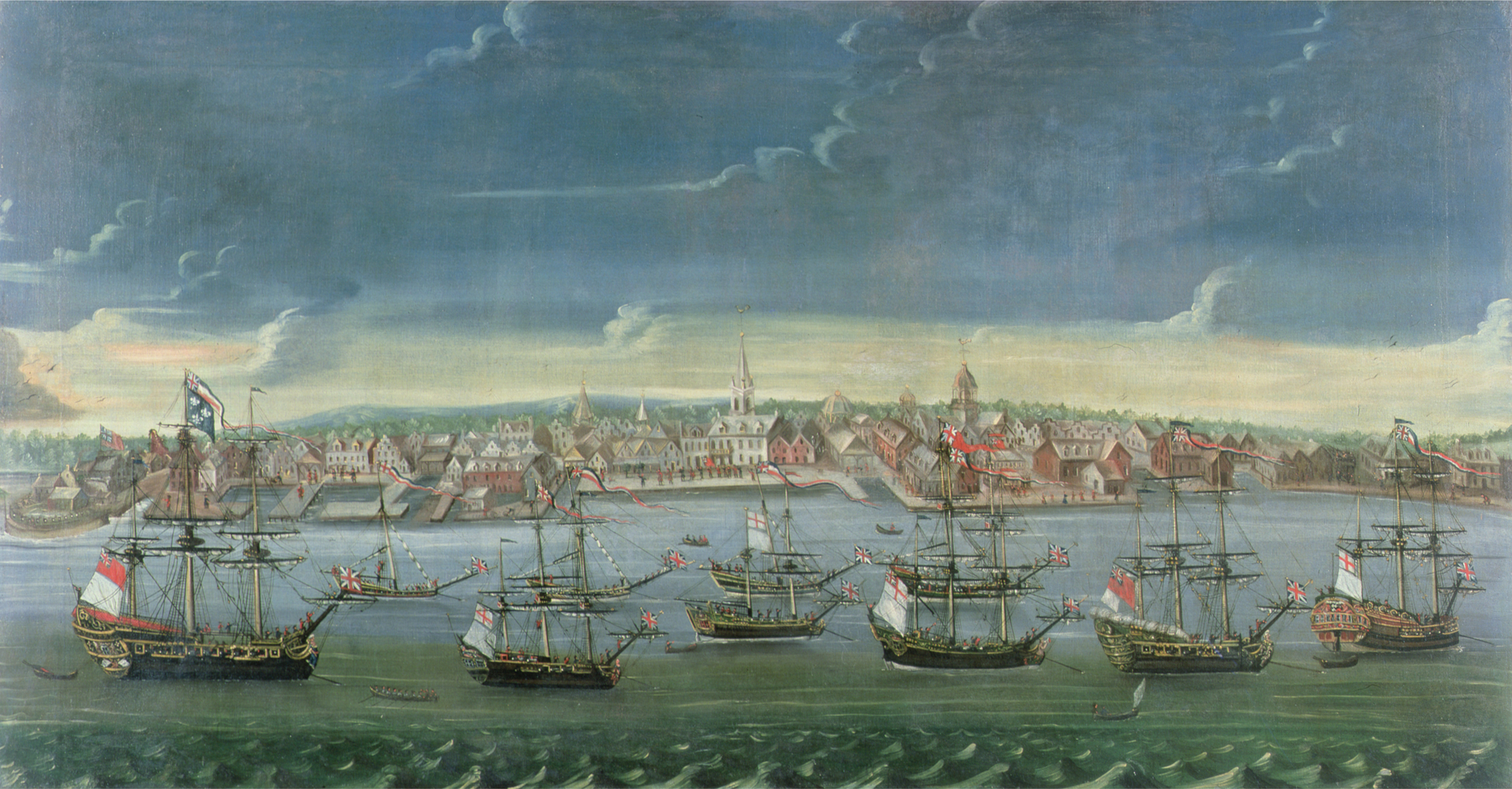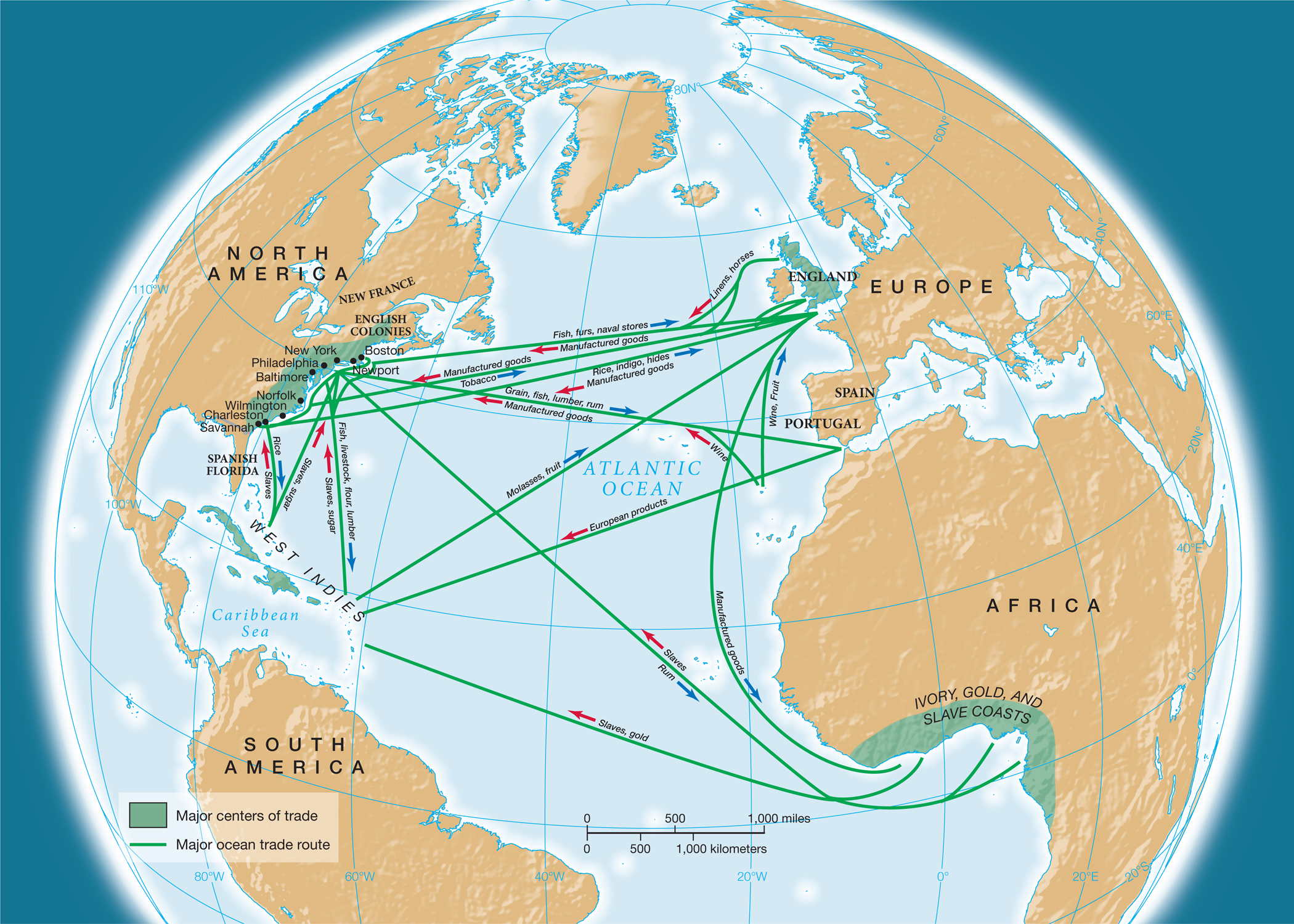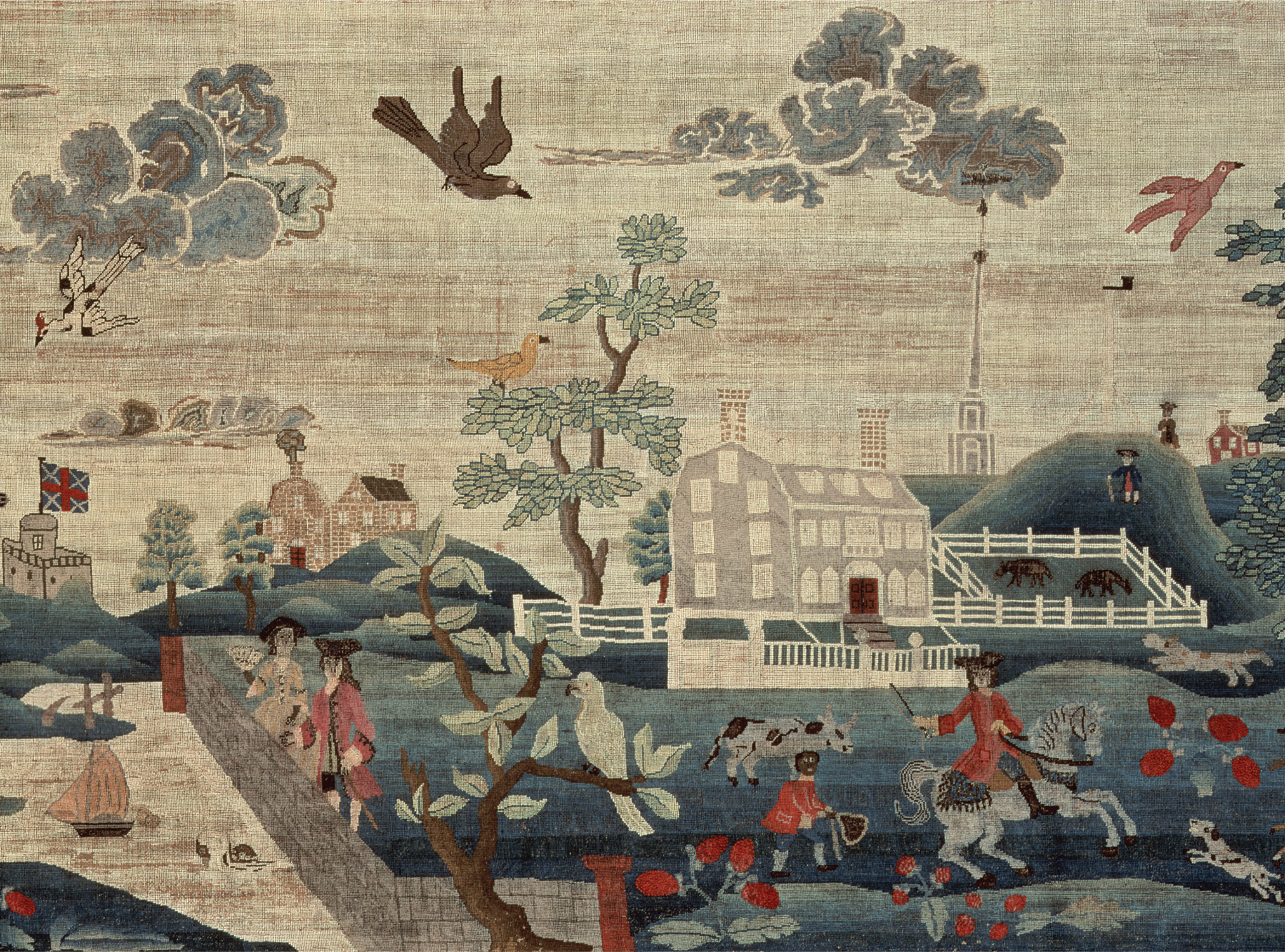The American Promise:
Printed Page 109
The American Promise Value
Edition: Printed Page 105
Chapter Chronology
Farms, Fish, and Atlantic Trade
A New England farm was a place to get by, not to get rich. New England farmers grew food for their families, but their fields did not produce huge marketable surpluses. Instead of one big crop, a farmer grew many small ones. If farmers had extra, they sold to or traded with neighbors. Poor roads made travel difficult, time-consuming, and expensive, especially with bulky and heavy agricultural goods. The one major agricultural product the New England colonies exported—livestock—walked to market on its own legs. By 1770, New Englanders had only one-fourth as much wealth per capita as free colonists in the southern colonies.

VISUAL ACTIVITY New York Harbor This portrait of New York harbor about 1756 illustrates the importance of Atlantic commerce to the prosperous city in the background. The painting emphasizes a variety of ocean-going ships in the foreground. During its busiest seasons, the harbor commonly had ten times as many ships at anchor, which was nearly impossible for the artist to depict. © Collection of the New-York Historical Society, USA/The Bridgeman Art Library. READING THE IMAGE: How does the painting reflect New York’s participation in Atlantic commerce? CONNECTIONS: Why were the largest and most prosperous cities in eighteenth-century America port cities?
As consumers, New England farmers participated in a diversified commercial economy that linked remote farms to markets throughout the Atlantic world. Merchants large and small stocked imported goods—British textiles, ceramics, and metal goods; Chinese tea; West Indian sugar; and Chesapeake tobacco. Farmers’ needs supported local shoemakers, tailors, wheelwrights, and carpenters. Larger towns, especially Boston, housed skilled tradesmen such as cabinetmakers, silversmiths, and printers. Shipbuilders were among the many New Englanders who made their fortunes at sea.
Fish accounted for more than a third of New England’s eighteenth-century exports; livestock and timber made up another third. The West Indies absorbed two-thirds of all New England’s exports. Slaves on Caribbean sugar plantations ate dried, salted codfish caught by New England fishermen, filled barrels crafted from New England timber with molasses and refined sugar, and loaded those barrels aboard ships bound ultimately for Europeans with a taste for rum (made from molasses) and sweets. Almost all of the rest of New England’s exports went to Britain and continental Europe (Map 5.2). This Atlantic commerce benefited the entire New England economy, providing jobs for laborers and tradesmen as well as for ship captains, clerks, merchants, and sailors. (See “Seeking the American Promise.”)

MAP ACTIVITY Map 5.2 Atlantic Trade in the Eighteenth Century This map illustrates the economic outlook of the colonies in the eighteenth century—east toward the Atlantic world rather than west toward the interior of North America. The long distances involved in the Atlantic trade and the uncertainties of ocean travel suggest the difficulties Britain experienced governing the colonies and regulating colonial commerce. READING THE MAP: What were the major markets for trade coming out of Europe? What goods did the British colonies import and export? CONNECTIONS: In what ways did the flow of raw materials from the colonies affect British industry? How did British colonial trade policies influence the Atlantic trade?
Merchants dominated Atlantic commerce. The largest and most successful New England merchants lived in Boston at the hub of trade between local folk and the international market. The magnificence of a wealthy Boston merchant’s home stunned John Adams, who termed it a house seemed fit “for a noble Man, a Prince.” Such luxurious Boston homes contrasted with the modest dwellings of Adams and other New Englanders, a measure of the polarization of wealth that developed in Boston and other seaports during the eighteenth century.
By 1770, the richest 5 percent of Bostonians owned about half the city’s wealth; the poorest two-thirds of the population owned less than one-tenth. Still, the incidence of genuine poverty did not change much. About 5 percent of New Englanders qualified for poor relief throughout the eighteenth century. Overall, colonists were better off than most people in England.
New England was more homogeneously English than any other colonial region. People of African ancestry (almost all of them slaves) numbered more than fifteen thousand by 1770, but they barely diversified the region’s 97 percent white majority. Most New Englanders had little use for slaves on their family farms. Instead, the few slaves concentrated in towns, especially Boston, where most of them worked as domestic servants and laborers.

VISUAL ACTIVITY Boston Common in Needlework Hannah Otis embroidered this portrait of Boston Common in 1750 when she was eighteen years old. The house belonged to the Hancock family. John Hancock, who later signed the Declaration of Independence, is shown on horseback. The needlework reveals that eighteenth-century Bostonians owned slaves. Museum of Fine Arts, Boston/The Bridgeman Art Library. READING THE IMAGE: What features of the portrait would communicate to an eighteenth-century viewer that it portrays a city? CONNECTIONS: How did life in Boston differ from that on rural farms in New England?
By 1770, the population, wealth, and commercial activity of New England differed from what they had been in 1700. Ministers still enjoyed high status, but Yankee traders had replaced Puritan saints as the symbolic New Englanders. Atlantic commerce competed with religious convictions in ordering New Englanders’ daily lives.
REVIEW Why did settlement patterns in New England change from the seventeenth to the eighteenth century?


